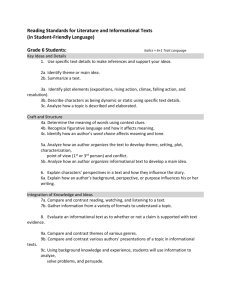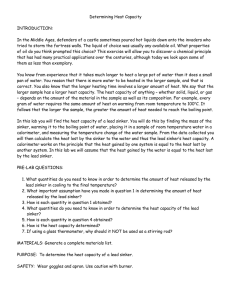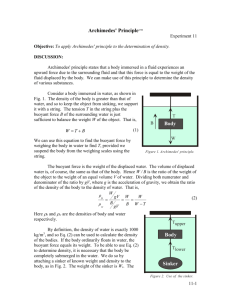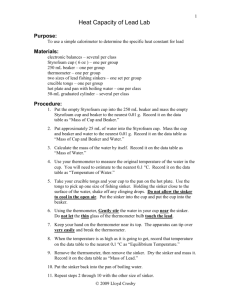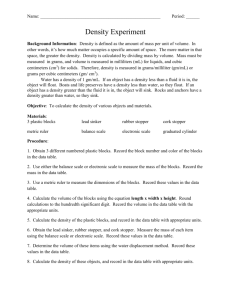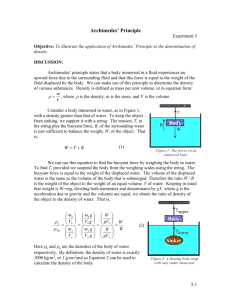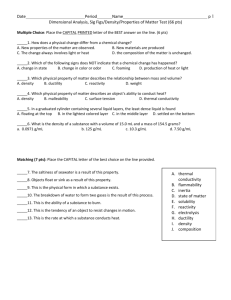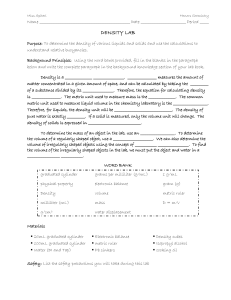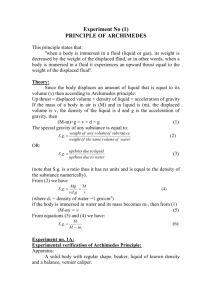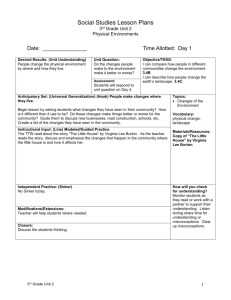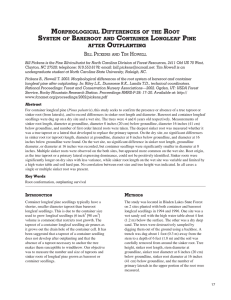File - Chemistry 1 Rea
advertisement
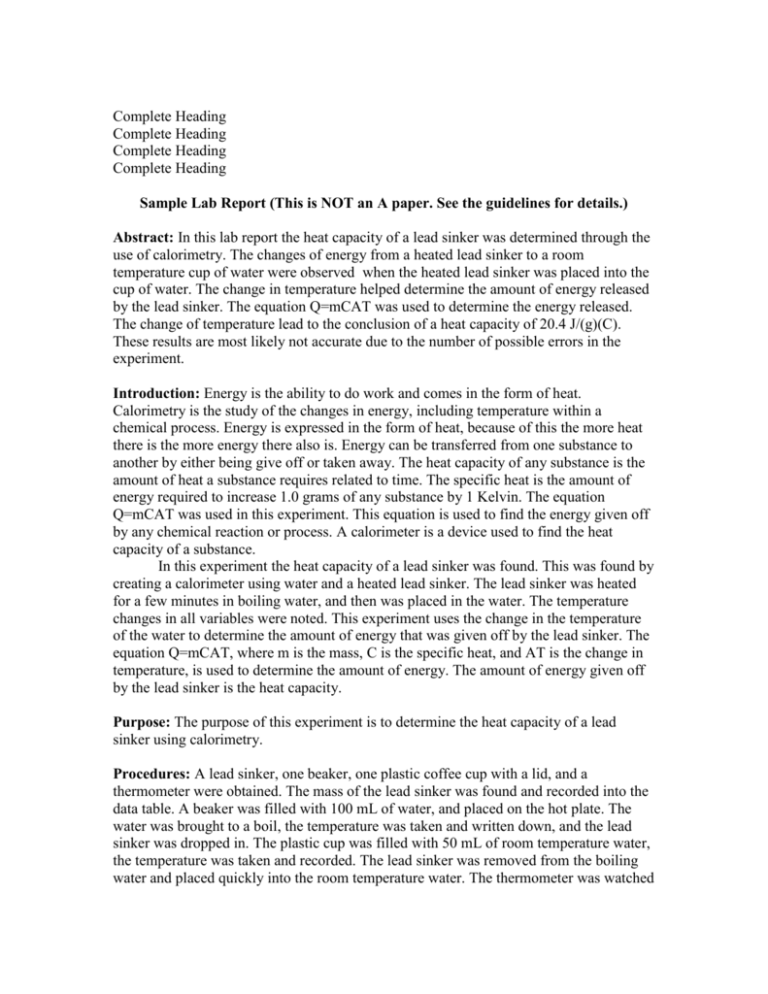
Complete Heading Complete Heading Complete Heading Complete Heading Sample Lab Report (This is NOT an A paper. See the guidelines for details.) Abstract: In this lab report the heat capacity of a lead sinker was determined through the use of calorimetry. The changes of energy from a heated lead sinker to a room temperature cup of water were observed when the heated lead sinker was placed into the cup of water. The change in temperature helped determine the amount of energy released by the lead sinker. The equation Q=mCAT was used to determine the energy released. The change of temperature lead to the conclusion of a heat capacity of 20.4 J/(g)(C). These results are most likely not accurate due to the number of possible errors in the experiment. Introduction: Energy is the ability to do work and comes in the form of heat. Calorimetry is the study of the changes in energy, including temperature within a chemical process. Energy is expressed in the form of heat, because of this the more heat there is the more energy there also is. Energy can be transferred from one substance to another by either being give off or taken away. The heat capacity of any substance is the amount of heat a substance requires related to time. The specific heat is the amount of energy required to increase 1.0 grams of any substance by 1 Kelvin. The equation Q=mCAT was used in this experiment. This equation is used to find the energy given off by any chemical reaction or process. A calorimeter is a device used to find the heat capacity of a substance. In this experiment the heat capacity of a lead sinker was found. This was found by creating a calorimeter using water and a heated lead sinker. The lead sinker was heated for a few minutes in boiling water, and then was placed in the water. The temperature changes in all variables were noted. This experiment uses the change in the temperature of the water to determine the amount of energy that was given off by the lead sinker. The equation Q=mCAT, where m is the mass, C is the specific heat, and AT is the change in temperature, is used to determine the amount of energy. The amount of energy given off by the lead sinker is the heat capacity. Purpose: The purpose of this experiment is to determine the heat capacity of a lead sinker using calorimetry. Procedures: A lead sinker, one beaker, one plastic coffee cup with a lid, and a thermometer were obtained. The mass of the lead sinker was found and recorded into the data table. A beaker was filled with 100 mL of water, and placed on the hot plate. The water was brought to a boil, the temperature was taken and written down, and the lead sinker was dropped in. The plastic cup was filled with 50 mL of room temperature water, the temperature was taken and recorded. The lead sinker was removed from the boiling water and placed quickly into the room temperature water. The thermometer was watched carefully, the changes in temperature of the water was watched and recorded. The water was occasionally swirled by hand. Results: In this experiment the temperature of the water changed. The temperature rose to a higher degree after the lead sinker was added to the water. The data from each variable of the experiment was recorded. Mass of lead sinker 77.8 g Volume of room-temperature water 50 mL Initial temperature of water 23.0 C Final temperature of water 28.8 C Temperature of boiling water 88.0 C The equation Q=mCAT was used in this experiment. The mass is represented by the mass of the lead sinker. C was the specific heat of water which was 4.184 J/(g)(C). AT was the change in temperature from the initial to the final. Conclusion: The purpose of this experiment was to find the het capacity of a lead sinker. The heat capacity was determined by the specific heat which was 20.4 J/(g)(C). The purpose of this experiment was accomplished because we did find the heat capacity of the lead sinker. The purpose was fully accomplished. My results were somewhat expected. I did expect the temperature of the water to rise when the lead sinker was added. The precision of this experiment and it accuracy are not all correct. Discussion: Some possible of likely sources of error in this experiment are not completely the math correctly with in the questions. Other sources of error include; observing the wrong temperature, or not putting the cap on the plastic coffee cup quickly enough and releasing heat. These errors would cause the experiment to be invalid. Any math done incorrectly would result in a completely wrong experiment. These possible errors affect my confidence in the experiment greatly. The math work completed could possibly by completely incorrect and other sources of error affect my confidence. I suspect that my math could be invalid because of the multiple errors and changed in the data. These sources of error are highly likely, although the experiment was performed twice for accuracy; the math was not and is highly likely to be inaccurate. This experiment is important to understand the changes in energy. This experiment shows the changes that energy will go through along with the transfer of heat to another substance. This experiment is important because energy is used in everyday and in the modern world.
